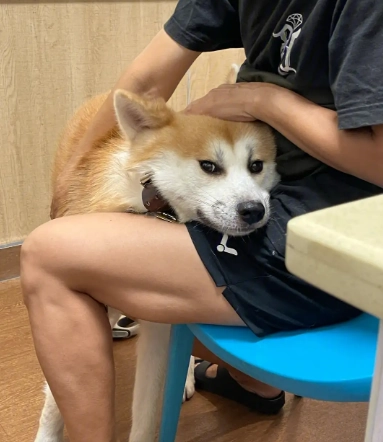What to Do When a Dog Has a Seizure: Emergency Steps and Holistic Remedies
If you’ve ever witnessed your dog suddenly collapse, convulse, or lose consciousness, you know how frightening it can be. Knowing what to do when a dog has a seizure can make all the difference. In this guide, we’ll explore what causes seizures in dogs, how to recognize the signs, emergency steps you can take, holistic remedies, and long-term care tips for dogs with epileptic seizures. Stay calm—your dog needs you.
Understanding Dog Seizures: What Causes Dogs to Have Seizures?
Dog seizures occur when there’s abnormal electrical activity in the brain. They can be classified as:
Primary epilepsy – often genetic and more common in certain breeds
Secondary seizures – caused by injuries, infections, tumors, toxins, or metabolic issues
Identifying the causes of seizures in dogs can help reduce their frequency. Make sure your dog avoids toxic substances, receives regular vet checkups, and maintains a balanced diet to lower the risk.

How to Recognize a Seizure in Dogs
Seizures in dogs often happen suddenly and may include the following symptoms:
Falling to the side or collapsing
Stiffening of limbs or rhythmic jerking
Foaming at the mouth
Loss of consciousness or awareness
Involuntary urination or defecation
These episodes usually last a few seconds to a few minutes. Afterward, dogs may appear confused, tired, or disoriented. Keep a record of the signs to help your vet determine the right dogs with seizures remedies.
What to Do If Your Dog Is Having a Seizure
During a seizure, your priority is to keep your dog safe. Here are the emergency steps for what to do if your dog is having a seizure:
Stay calm and do not panic.
Move furniture and objects away to avoid injury.
Do not restrain your dog or put anything in its mouth.
Turn off lights or loud sounds if possible.
Time the seizure and record the symptoms.
Knowing what to do when your dog has a seizure can prevent further harm and support better medical decisions.

Veterinary Care and Long-Term Treatment Options
After the initial seizure, consult a vet. Depending on the diagnosis, your vet may prescribe medications like phenobarbital or potassium bromide. Some dogs benefit from dietary therapy such as a ketogenic diet or liver-supporting supplements. In severe cases, surgery may be required. It’s crucial to understand that dogs with epileptic seizures require consistent monitoring and treatment.
Holistic Seizure Treatment for Dogs
In addition to medical care, many owners explore holistic seizure treatment for dogs. Some natural options include:
CBD oil for calming neurological activity
Acupuncture and herbal remedies
Omega-3 fatty acids to support brain health
Always consult your vet before introducing new remedies.

At-Home Care for Dogs with Seizures
Creating a seizure-safe environment can ease your dog’s recovery and prevent stress-related triggers. Tips include:
Keeping your home quiet and free of hazards
Maintaining a consistent feeding and medication schedule
Minimizing physical and emotional stress
Ongoing care is essential when managing dogs with seizures remedies effectively.
Everything Our Vets Recommend
FAQs: Dog Seizure Questions Answered
Can a seizure kill a dog?
Single seizures are rarely fatal. However, frequent or prolonged episodes can damage the brain or other organs, so immediate vet care is crucial.
Can dog seizures be cured?
Primary epilepsy can be controlled but not always cured. Secondary seizures caused by toxins, injuries, or illness may be reversible if the root cause is treated.
FAQ - What to Do When a Dog Has a Seizure: Emergency Steps and Holistic Remedies
Q: What should I do immediately when my dog has a seizure?
A: Stay calm, move your dog away from hazards, and avoid touching their mouth. Time the seizure and seek veterinary help if it lasts more than 5 minutes.
Q: Can seizures be prevented in dogs?
A: Some seizures can be managed with medication prescribed by a vet. Maintaining a healthy diet, avoiding toxins, and reducing stress can help prevent triggers.
Q: Are there holistic remedies for dog seizures?
A: Supplements like omega-3 fatty acids, magnesium, and herbal therapies may help, but always consult a vet before using holistic treatments.
Final Thoughts: Stay Prepared and Support Your Dog
Knowing what to do if dog has seizure is part of responsible pet parenting. Keep emergency steps in mind, follow your vet’s treatment plan, and explore dogs with seizures remedies to improve your dog’s life. Stay calm, be patient, and offer your furry friend the support they need to thrive.
You May Like:
- Best Flea and Tick Shampoo for Dogs: Safe, Effective Options and How to Use Them
- Can U Get Worms from Dogs: Causes, Risks, and Prevention Guide
- How to Treat Mange in Dogs at Home – Effective Remedies and Care Guide
- Best Hip and Joint Supplement for Dogs: What Works and What to Avoid
User Comments
Does flea treatment kill ear mites too?
Can dogs take human probiotics?
Can dogs have people probiotics safely?















Leave a Reply